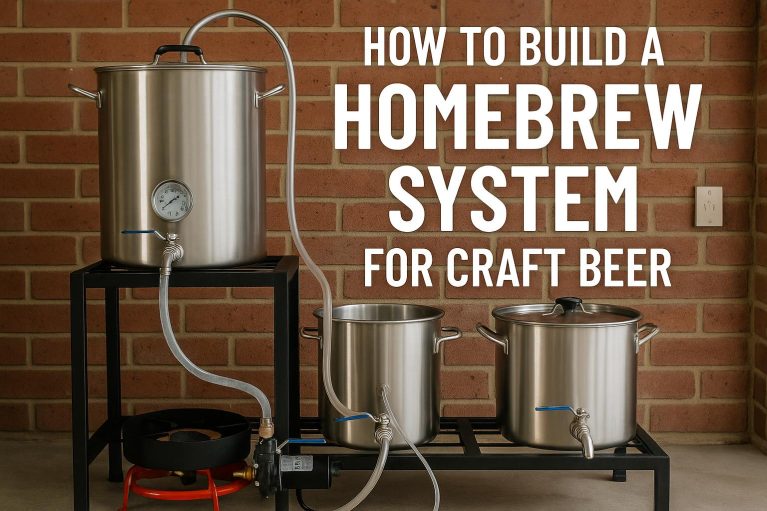The Nutritional Composition of Craft Beer
Craft beer has grown in popularity among enthusiasts not just for its diverse palate of flavors, but also for its artisanal crafting techniques. However, beyond the artistry and enjoyment, there lies a layer of nutritional value that might surprise some. Although it should not be confused with health foods, craft beer does offer certain nutritional components owing to its blend of natural ingredients. Typically, beer is brewed using four primary ingredients: water, barley, hops, and yeast. Each of these ingredients brings a unique set of nutritional perks to the final product.
The Role of Vitamins and Minerals
Craft beer possesses small yet notable amounts of several B vitamins. These include B12, riboflavin, and niacin. These vitamins are integral to various metabolic processes within the human body. For instance, vitamin B12 is crucial for red blood cell formation and DNA synthesis. Riboflavin plays a role in energy production, and niacin is important for maintaining healthy skin and nerves. Furthermore, the brewing process sometimes enriches the beer with essential minerals, albeit in limited amounts. Potassium, calcium, and magnesium are among these minerals, each playing roles such as maintaining fluid balance, supporting bone health, and contributing to nerve function, respectively.
Understanding Antioxidants
Antioxidants are components that help protect our body’s cells from damage. In the context of craft beer, hops—the flower used as a stabilizing agent and flavor enhancer—are particularly notable for their antioxidant content. This is mainly due to polyphenols, compounds found abundantly in hops. Polyphenols are heralded for their ability to combat inflammation and neutralize free radicals, substances that can cause cellular harm over time. Regular, moderate consumption of polyphenol-rich beverages may contribute marginally to reducing oxidative stress in the body.
Exploring Health Benefits
The moderate consumption of craft beer could potentially offer health benefits for some individuals, although these should be weighed against its risks.
Impact on Cardiovascular Health
There are studies that have looked into the relationship between moderate alcohol consumption and heart health. These studies often suggest that moderate beer drinking might have a positive effect on heart disease risk. One mechanism could be the elevation of HDL (high-density lipoprotein) levels, colloquially known as “good” cholesterol. Moreover, beer’s potential blood-thinning properties might help in reducing the risk of clot formation, thereby providing some protective benefit against heart attacks and strokes.
Benefits to Bone Health
Silicon, a trace element linked to bone health, is another component found in certain craft beers. Particularly, beers with a high content of malted barley and hops tend to contain higher levels of dietary silicon. Silicon is believed to aid in the formation of bone and may enhance mineral density within bones, thereby potentially lowering the risk of osteoporosis—a condition characterized by weak and brittle bones.
Effects on Cognitive Function
Emerging research has suggested that moderate intake of alcoholic beverages, including craft beer, may offer protective benefits for cognitive health as individuals age. Some studies indicate that minor consumption could be associated with a reduced risk of developing cognitive disorders. However, it is crucial to remember that excessive consumption can have the opposite effect, impairing cognitive functions and increasing the risk of neurological conditions.
Recognizing Risks and Concerns
While there are potential perks associated with the consumption of craft beer, it is crucial to recognize and understand the accompanying risks.
Caloric Content and Weight Management
Craft beers, known for their varied and rich flavors, often come with a higher caloric content compared to their standard counterparts. This can primarily be attributed to higher alcohol levels and additional ingredients that enhance flavor and texture, such as fruit purees or lactose. Regular consumption without mindful caloric management might result in weight gain or interfere with weight management goals.
Alcohol Dependency
Any form of regular alcohol consumption carries the risk of developing a dependency. Even when consumed in moderation, awareness is crucial given the nature of alcohol use disorder. Symptoms can manifest subtly, including an increased tolerance for alcohol or behavioral changes. Recognizing these signs early can be critical in preventing escalation into more serious issues.
Liver Health Concerns
Of significant concern with any alcoholic beverage, including craft beer, is the impact on liver health. Chronic excessive drinking can lead to liver damage over time. Conditions such as fatty liver disease, alcoholic hepatitis, and cirrhosis pose serious health risks. Thus, moderating intake and understanding personal health limits is vital for long-term liver health preservation.
The Importance of Moderation
Moderation is the cornerstone of responsible craft beer consumption. Generally, moderation is defined by health authorities as consuming up to one standard drink per day for women and up to two for men. However, individual health conditions and factors may necessitate different guidelines, which is why consultation with a healthcare provider is encouraged for personal advice.
The careful balance of enjoying craft beer lies in understanding its nutritional aspects and potential health benefits while being consciously aware of its risks. This balance allows one to enjoy the craftsmanship and flavors that craft beer offers without adverse effects on health. Should you wish to delve deeper into this topic, it’s advisable to explore resources from established health organizations such as the CDC or the World Health Organization.
Craft beer enthusiasts can enjoy both the sensory and potential health benefits of this beverage, provided it is consumed with awareness and respect for its powerful ingredients.


